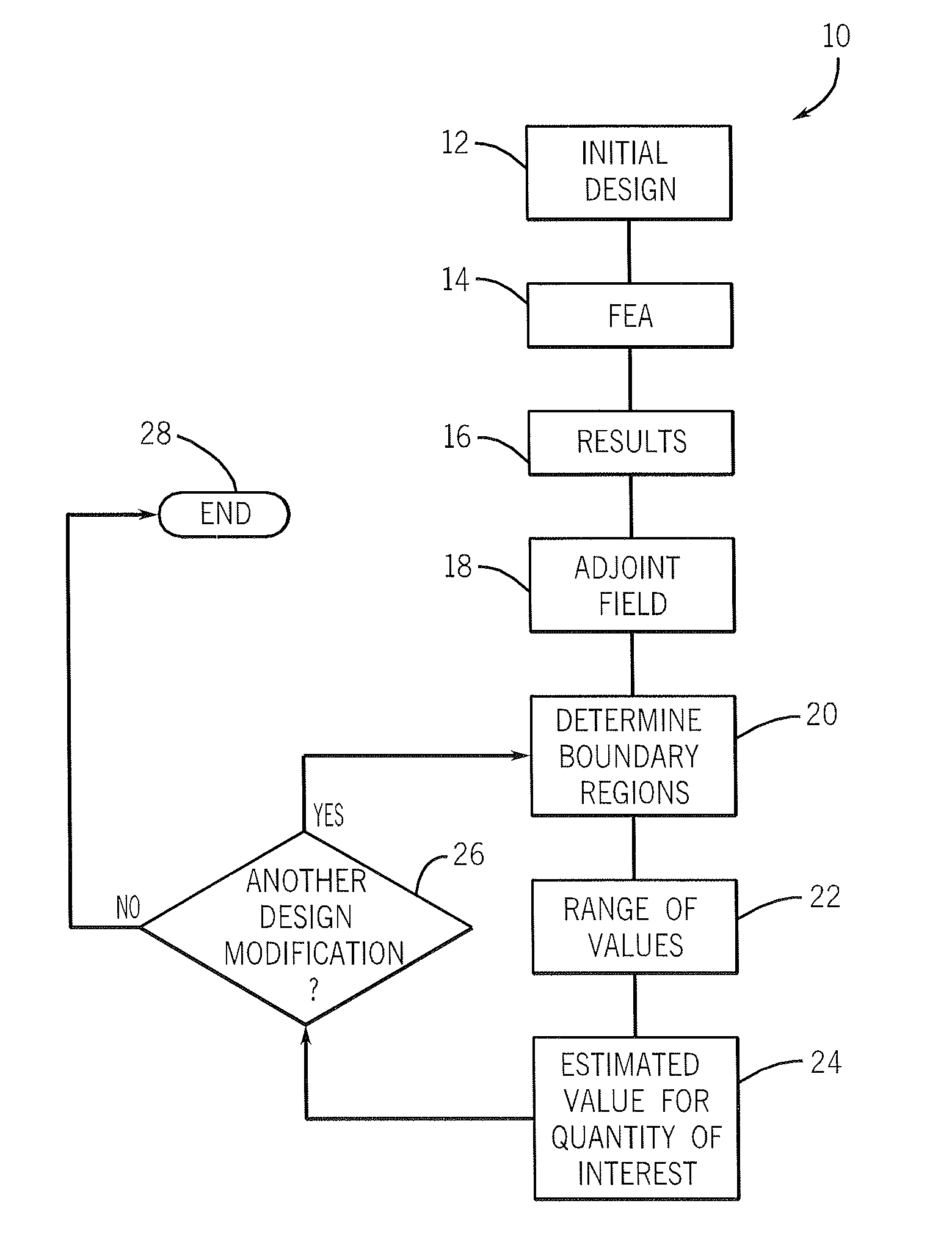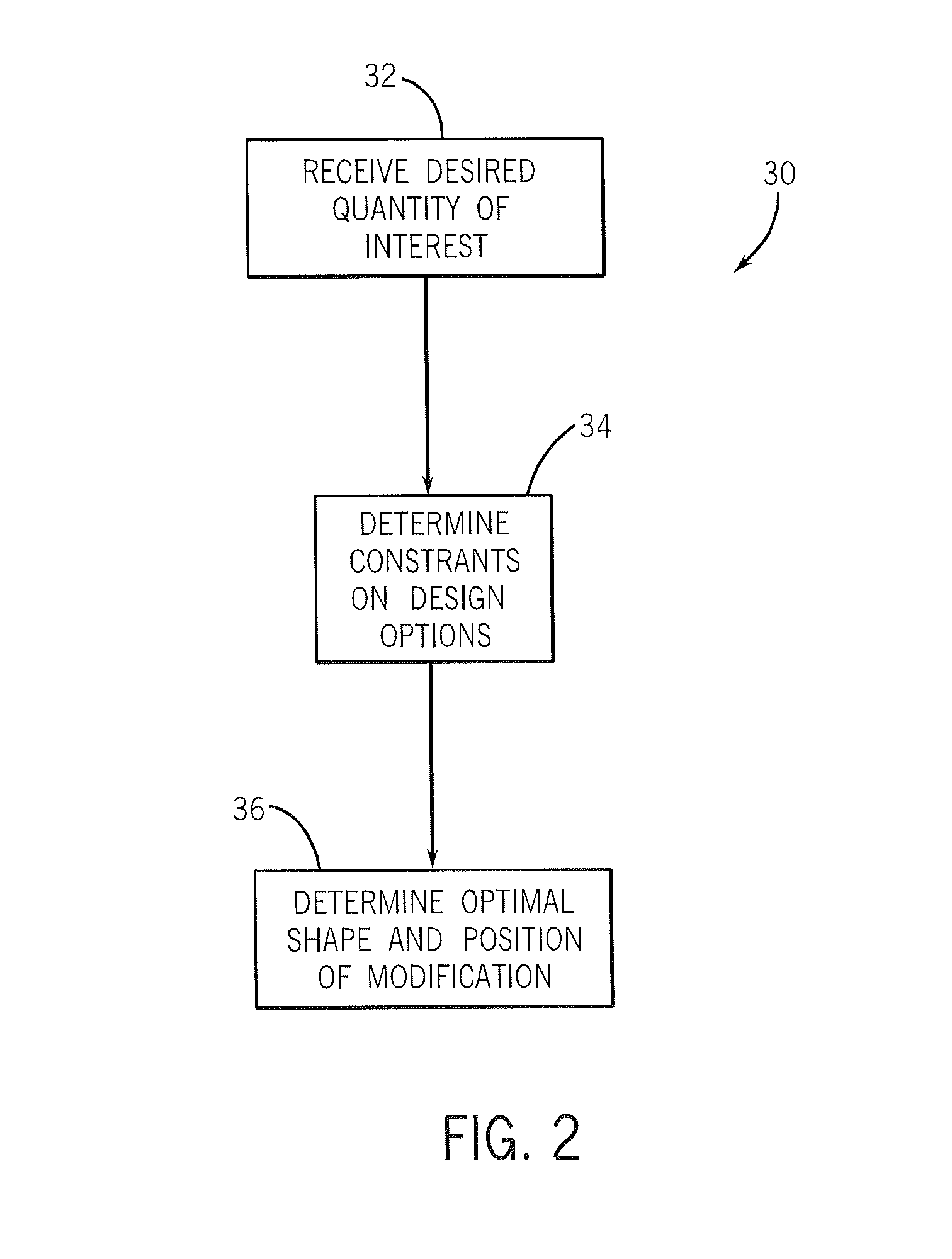Method and apparatus for determining design modification effects on a computerized engineering model
a computerized engineering and effect technology, applied in the field of method and apparatus for determining design modification effects on computerized engineering models, can solve the problems of complex geometry and field problems that require computational intensiveness, take several hours to complete, and affect the accuracy of the results
- Summary
- Abstract
- Description
- Claims
- Application Information
AI Technical Summary
Benefits of technology
Problems solved by technology
Method used
Image
Examples
Embodiment Construction
[0020]The present invention is directed to a technique, and hardware / software / firmware for carrying out such a technique, in which the impact of a design change of a finite design element is determined without execution of the finite element method.
[0021]Referring now to FIG. 1, the design exploration process 10 begins with development, or otherwise accessing, an engineering design at block 12. A number of design and development tools, as known in the art, may be used to generate the initial design. Consistent with conventional finite element method, the initial design generated at block 10 is subjected to finite element analysis at block 14. As known in the art, finite element analysis is a computer simulation technique that uses numerical analysis to assess the performance of the design when subjected to various environmental factors. For example, finite element analysis may be performed for a dual device heat block design to assess the weighted temperature within a semiconductor ...
PUM
 Login to View More
Login to View More Abstract
Description
Claims
Application Information
 Login to View More
Login to View More - R&D
- Intellectual Property
- Life Sciences
- Materials
- Tech Scout
- Unparalleled Data Quality
- Higher Quality Content
- 60% Fewer Hallucinations
Browse by: Latest US Patents, China's latest patents, Technical Efficacy Thesaurus, Application Domain, Technology Topic, Popular Technical Reports.
© 2025 PatSnap. All rights reserved.Legal|Privacy policy|Modern Slavery Act Transparency Statement|Sitemap|About US| Contact US: help@patsnap.com



